Insects
Chiggers
Chiggers are known as red bugs. They are the larva of harvest mites. Animals meet part of their nutritional needs. They also eat vegetation.
Chiggers attach themselves to hair follicles. They inject saliva. They will wander to favorite sites such as the groin, armpits and flex areas such as waist, ankles and wrist. These pests can feed upon you for up to several days. The saliva from their bite can cause an allergic response. They grab onto your clothing as you hike in brushy areas.
To prevent chiggers from attacking you, avoid vegetated areas where you walk directly through the brush. Protective clothing provides a barrier for your skin; shorts, sandals, and tee shirts should not be worn. Cover up with long pants and shirt and enclosed footwear. Be sure to button up cuffs and collars and tuck pant legs into the footwear.
Change clothing when you are out of the infested area and wash them before they are used again. An insect repellent applied to the bare skin is useful. A tick repellent containing dimethyl phthalate or one called Duranon is effective in keeping red bugs off of your skin. The dimethyl phthalate can be applied to your skin, while Duranon is only put on your clothing.
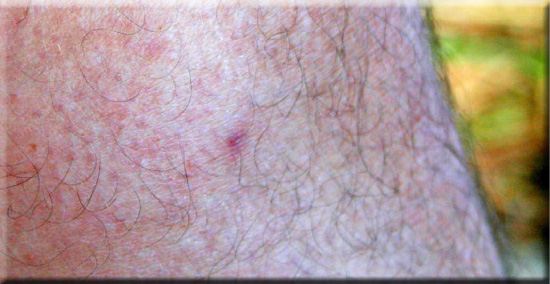
A hot, thorough bath as soon as possible is effective since it washes them off before they attach. Lots of suds can also remove the attached chiggers.
Chiggers create a severe itch. A rash with hives is a symptom. The hive’s center may have an attached chigger but they are so small that they are difficult to detect without magnification. Treatment is a soapy cleansing, oral antihistamine (Benadryl), or in more severe cases corticosteroid lotions are also effective.
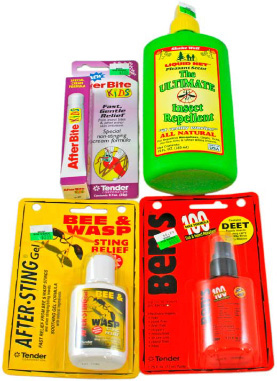


Fire Ants
These tenacious biters are most common in the South. They are painful bites which feel like you’re suddenly on fire.
Fire ants are very territorial and will repeatedly bite you aggressively. Their mounds are full of activity and are built in sandy areas. Avoid camping and resting near such mounds. Treatment is to wash the area with soap and water, ice it for twenty minutes, and take an oral antihistamine. If the person bit is allergy prone, be prepared with the bee sting kit.
Black Flies
Black flies are also known as gnats in many areas. They resemble small houseflies. They can inflict a bite that is usually painless because they first inject a natural anesthetic and then suck or sponge up your blood. If the bite becomes infected, a painful welt can occur. Itching and scratching bites can introduce bacteria from your fingernails and cause infection.
The biggest threat from black flies is their vast numbers. In the Northwest Territories and tundra regions, their swarms and ubiquitous presence can be maddening. The threat to your psyche is that there’s an army of millions of biting, bloodsucking insects out for your blood. It’s difficult to enjoy the serenity of the area with their presence. Their vast numbers have been fatal to small birds and animals whose death was due to blood loss. Black flies are less active early in the morning, but they build momentum as the day progresses. Evening brings the peak in numbers and activity. They prefer warm, humid weather and dislike cool, dry breezes.
The season for these black flies is late spring and early summer; their numbers usually peak the first two weeks after snow melt.
Bites cause welts with noticeable blood loss. Most of these bites are painless so they are only noticed when bloody welts are seen. If bites become infected, pain and itching occur. A rash is a sign of an allergy. Anaphylaxis is a possibility for those inflicted with severe allergies. Carrying a bee sting kit with epinephrine is a safety measure.
Treatment is given to reduce inflammation, pain and swelling. A cold compress is effective. Oral antihistamines may also help in severe cases. Treatment is the same as for mosquito bites. Pump out the venom, wash with soap and water, don’t scratch, use soda ointment, and after-bite stick.
Dangers in tropical regions are that black flies can transmit a disease that can cause blindness, but in the far north they are more of a severe nuisance than a medical threat. Their vast numbers can be maddening. Repellents such as Deet are not as effective for black flies as they are for mosquitoes. Since this mainstay deterrent is not as effective, protection must come from proper clothing and netting. See the chapter on mosquitoes. Tent netting allows a safe harbor from these hordes of flies. Plan your activities for early in the day and in breezy, dry areas. Plan your trip during the off season. Mid and late summer offer fewer black flies. Avoid peak seasons. (First and second weeks after snow melt) The black fly’s threat is not a serious health hazard, but they do cause temporary discomfort. Be prepared and their effects will be minimized.
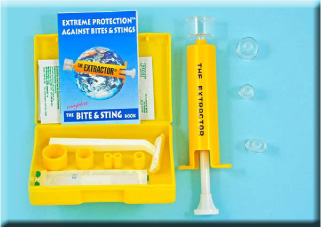
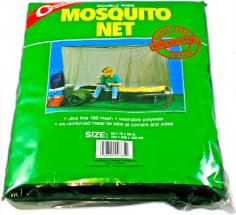
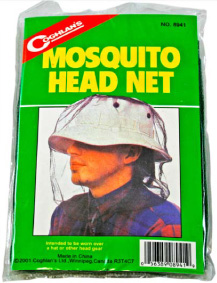
Horseflies and Deerflies
These insects like to land on me and with their jaws take a fast bite and fly away. The wound is large in comparison to the size of the fly. They sponge up the blood. I’ve been bitten even when I’m covered with insect repellent. It seems as if the Deet is just a seasoning. Thank goodness I’ve only experienced a few, and I’ve never seen a swarm. They seem to be lone hunters. Their bite leaves a mark. It’s treated best by cleaning the area with soap and water to prevent infection. My bites never swell up, so I don’t believe that they inject any allergens. I guess they have no need to use any anticoagulants when their bite is big enough to simply sponge up your blood. But if there is any swelling use an oral antihistamine and ice the bite for twenty minutes.
These flies are big and easily felt. I enjoy swatting them before they bite. But this spatters you with their body fluids; another reason to thoroughly clean the bite area.
Horseflies and deerflies are rude. They don’t follow any rules. Repellents don’t work on me. They can bite you in bright sunlight and can resist being blown away by a breeze. They are most prevalent during late spring and summer. About all you can do is to cover up with clothing and to be fast on the swat. Their large size makes them noisy flies and easier to swat.
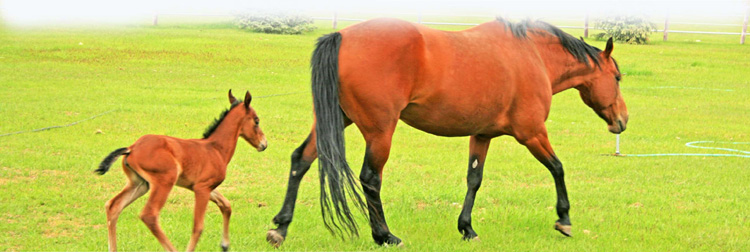

Mosquitoes
Mosquitoes are far more of a problem than bears and snakes. These biting flies can make life almost unbearable. Even a lone mosquito buzzing inside your tent can keep you from your rest. Once you turn on your head lamp, it quickly disappears.
Mosquitoes are like sharing dirty needles because you can’t tell what other man or beast it has just fed upon. Mosquitoes can transmit some severely dangerous diseases. Malaria is one of them. It is one of Africa’s fatal disorders. Encephalitis can also be transmitted. West Nile Virus is a recent epidemic in the U.S.
Most bites do not cause disease. They are usually painless affairs only sensed by light, touch, or visual stimuli. The mental thought of some creature injecting you with the chemicals in their saliva and drinking your blood is repulsive, especially when they have just fed on another unknown person or animal.
West Nile virus has caused its share of fatalities in both humans and horses. Eighty percent of people bitten by an infected mosquito do not feel any symptoms. In the 20% that have symptoms, they are usually mild. However, malaise fever, headaches, body aches, nausea, vomiting, swollen lymph nodes, and skin rash (chest, stomach, and back) can be present. Medical attention is required if severe headaches and mental confusion occur.
One in 150 bites can develop into severe symptoms. These can include tremors, loss of vision, paralysis, and coma. Symptoms take three to fourteen days to appear after a person is bitten. There is no specific cure available. Those afflicted must improve on their own. The chronically ill, aged, pregnant mothers, and youngsters are more vulnerable to problems. Young people don’t think to take proper precautions sometimes. When my son was in high school, he and a friend of his went to a new golf course called “East Bay.” This area was

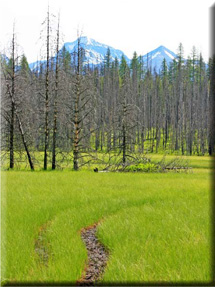
known for its hoards of mosquitoes, but they still wanted to go. They wore shorts, took off their shirts (for a cool tan), and didn’t pay attention to any mosquitoes. My son is sensitive to bee stings and for some reason his body attracts any insects in the area. When he got home he was totally covered with mosquito bites except for where he wore his shorts. Needless to say, he woke up the next morning all swollen up, with a fever and an infection that required antibiotics for ten days. He was really sick but learned how important it is to dress correctly.
First aid for mosquito bites includes washing the area well with antibiotic soap to prevent infection. An oral antihistamine may be effective. A paste of sodium bicarbonate applied to the area can reduce swelling and itching. Scratching can introduce bacteria from underneath the fingernails causing secondary bacterial infection.
Recently I acquired a suction pump injector system made for bites. It’s like a reverse syringe with interchangeable head sizes. I put it on a recent mosquito bite and left it on for close to a minute. I then followed it up with an after-bite stick medication. My bites didn’t become inflamed or even itch. It reduces the symptoms by drawing out the fluids injected by the mosquito, thus lessening the inflammatory response.
I now carry this kit with me when in mosquito country. The after-bite stick is helpful alone, but when used in combination with the syringe I believe it’s the most effective treatment. However, it must be applied as soon after the bite as possible to really be effective.

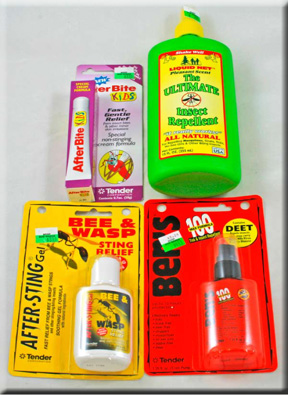
When there are severe, multiple bites, the use of an oral antihistamine such as Benadryl is effective in lessening the inflammatory response. Chilling the area by immersing your arm in a cold stream, or placing a cloth soaked in cold water on the bite, or better yet applying crushed ice to it can be helpful in reducing the itching.
Preventing mosquito bites is better than any available cure. Cover up with tightly woven clothing that these pests cannot bite through. Wear long pants and shirts. For exposed skin such as hands, face, and neck, I use a small amount of DEET. DEET or N, N-diethyl-meta-tolumide is the most effective insect repellent currently on the market. A 35% concentration is as effective as a 100% DEET concentration. Opt for the 35% ones. Don’t use for prolonged periods of time. Other repellents are Avon’s Skin So Soft, which is also somewhat effective. Females prefer this to DEET. Citronella and eucalyptus oils are also effective; again apply to exposed skin. This can be a good alternative to continued, prolonged use of DEET. Also these are preferred for use in DEET sensitive people.
Mosquito coils made with pyrethrum or other insecticides can deter mosquitoes and no-see-ums. Burn them in camp to reduce the number of mosquitoes. Mosquito netting is also effective. My tents have mosquito netting that effectively keeps them out. Head nets worn over a wide-brimmed hat are also effective. You must keep the netting away from your skin or these pests will adroitly bite through the netting. There must be space between the netting and your skin. Also the netting should be black because black netting is easier to see through than other colors. Black absorbs all the colors and doesn’t reflect them.
Select your campsite away from still and especially stagnant water because the concentration of mosquitoes will be heavier near such water sources. Set up camp in the open air where breezes make it difficult for mosquitoes to hover near you or your camp. When hiking, walk briskly, and when you rest, do so in windy areas; mosquitoes are more of a problem for slow movers. Mosquitoes are less abundant in bright, sunlit areas. They prefer to go on the prowl in the shade and at dawn and dusk.
Darker clothing attracts more mosquitoes than lighter clothing, but mosquitoes are more easily spotted on light colored cloth.
Avoid extended exposure during the peak of the mosquito season. These insects are hatched in stagnant water from larva to adult life forms. The females like to feed upon blood to produce fertile eggs. The males and females breed. The females lay their eggs back into the stagnant water, and when their life cycle is complete, they die. The female is the only one that can bite. These females are attracted to the carbon dioxide of your expired breath. That’s how they find you. The peak of mosquito season is a three to four week period after the stagnant water is available and at its optimal temperature. In the alpine areas this is usually June through mid July. Later in the season the numbers of mosquitoes are remarkable reduced. Plan your lengthy trips accordingly.
The hoards of buzzing mosquitoes and their itchy bites can be maddening. The faint sound of their busy wings is an alarming sound, one which can make you nervous. Go prepared to prevent their bites. If you do have an incidental bite, treat it quickly and effectively.
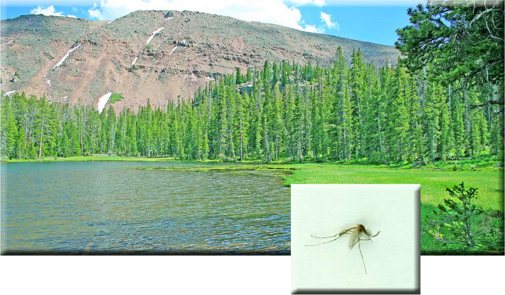
No-See-Ums
These are members of the chironomid or midge family. They are the smallest tormentors. They are likely to drive a camper crazy because of their vast numbers. Midges breed in swarms in numbers that can be astonishing. They can swarm your campsite. The buzzing sound made by millions of midges can be nerve-racking.
Although midges can’t really bite, it seems like they do. Wherever midges are found, there are usually mosquitoes or black flies that occur simultaneously which cause the bites. Once bitten you may think that all of these no-see-ums are capable of biting. This can cause mental havoc.
Prevention includes protective clothing, fine mesh netting, and Deet. Clothing and netting provide the most protection. Chemical repellents are not as effective
Camp away from water; lakes and streams are where breeding and egg laying must occur. Also avoid the no-see-um season which is highest for just about three weeks after ice-out.
Your mental attitude plays a major role in how these no-see-ums affect your camp.

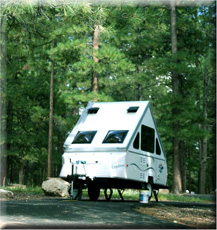


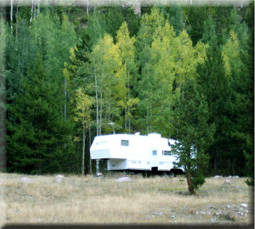
Wood Ticks
Wood ticks are parasites found in grasses and bushes. They transmit themselves to you by crawling onto you when you come into contact with vegetation. Then they crawl about your clothing looking for a place to come into contact with your skin. There they make a painless bite and attach their jaws into your skin. They are after your vital fluids.
Ticks are about ¼” diameter but young nymphs are only pin-head in size. They are dark brown in color.
Ticks can be infected with serious diseases such as Lyme disease and Rocky Mountain spotted fever. Twelve percent of the ticks world-wide carry disease. Once they have attached, it takes them nearly eight hours to transmit a disease if they are carriers. The vast majority of ticks are not disease transmitters.
The early symptoms of Lyme disease and Rocky Mountain spotted fever are important to recognize. The earliest evidence of Lyme disease is a skin rash near the bite. This happens about a week after the bite. This rash expands into a reddish splotch. The classic blotching skin pattern looks like a bulls eye: a center red dot with a distinct ring around the center. Flu-like symptoms occur; these are: fever, malaise, headache, and deep fatigue. They last for about a week, but can reoccur.
Lyme disease can progress to serious health problems. The second stage may affect breathing, and cause severe headaches, encephalitis, meningitis, heart palpitations, and facial muscle paralysis.
The third stage consists of joint pain, numbness, burning pain, and swelling of the brain. Serious heart problems and impaired mental activity can also occur. If untreated, a chronic, life-long impairment can result such as arthritis, and muscle and nerve damage. Antibiotics and a vaccine called Lyric help cure and prevent reoccurring bouts.
Rocky Mountain spotted fever’s initial symptoms are: high fever, headache, chills, muscle pain, and deep fatigue. A spotted rash occurs a few days later which starts on the hands and feet and then spreads. This characteristic rash gives Rocky Mountain spotted fever its name. Lyme disease and Rocky Mountain spotted fever should be treated by a physician.
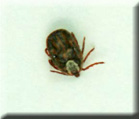
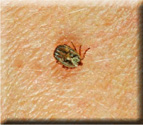
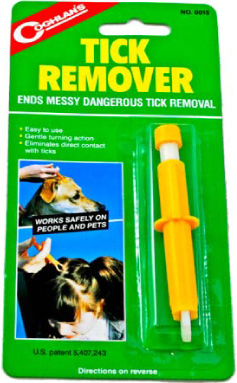
Self inspection should be done periodically. A tick’s dark brown coloration can be seen better on light colored clothing. Once you find a tick, don’t crush it because it may spread infected fluids to your skin and clothing. When inspecting yourself, touch every inch of your person; underarm creases are favorite locations for ticks to imbed themselves.
If an embedded tick is found, be careful in its removal. Sharp tweezers are good for pulling out the tick. Special tweezers have been designed for this removal. Carefully grasp onto the tick’s head and pull on it. You want it to back out under its own power. Use caution not to twist the tick because its head may break off and leave its embedded jaws inside you. Use caution not to crush the tick because this may inject more of its body fluids into your wound. Use a gentle pull on its head to back it out.
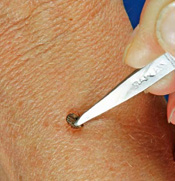
Not all ticks carry disease; the vast majority are harmless. Once the tick is removed, cleanse the wound with soap and water. Alcohol and an antibacterial soap are helpful. Take note of the date you were bitten, and watch for subsequent early warning symptoms such as a rash, spotting on hands or feet, and/or reddened, widening blotching, plus flu-like symptoms. Remember, it takes about eight hours of embedding to transmit disease. The best way to prevent problems with ticks is to routinely self-inspect and remove any that are present. These precautions should be taken before the eight hour interval is up.
To prevent ticks from getting on you, use Deet on exposed skin, especially at junctions between pant legs and ankles. Ticks can easily penetrate socks, but tightly woven clothing is an effective barrier. Slick nylon clothing gives them poor traction and they fall off. Duct taping pant legs to your boot is another effective barrier. Wear light clothing so their presence is easy to see. They wander about on you for several hours before finding the right spot to embed. Remember that Deet is not a good idea for small children and pets.
At night, if you happen to feel something crawling around on you, inspect it with a light. Don’t crush it in the dark because that may contaminate you with nasty body fluids. Before dressing, check out your clothing for ticks if you’ve been in a contaminated area, even after you’ve come home. My wife will automatically wash all of our clothing when we get back from an outing if we’ve encountered any of these nasty insects. I found four wood ticks on myself after I went for a hike one day in June last year. When I got home, my wife made me take my clothes off in the garage and take a hot shower. Our car was not used again until we thoroughly cleaned the entire interior. (She found another one on the ceiling of the car.) It’s better to be safe than sorry. I didn’t know I had gone into a bad area; I didn’t get near any heavily vegetated areas and stayed right on the trail. The ticks still came home with me!
Avoid hiking in heavily vegetated areas during the peak of the tick season. With the proper precautions, you can safely camp in tick-infested areas with only a few inconveniences.
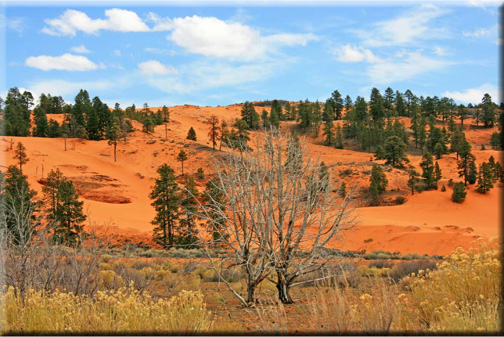


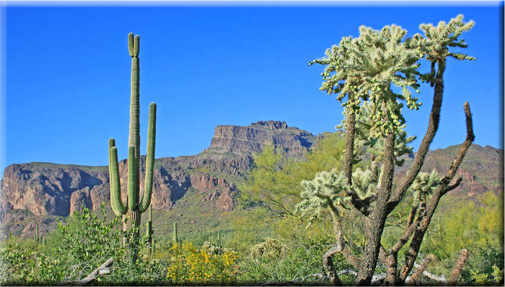
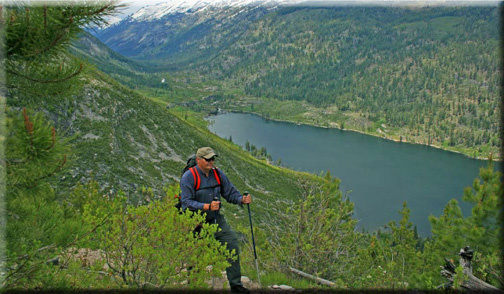
Scorpions
Scorpions are active at night and during the day. They like to hide underneath rocks, wood, and other cover. While active, they may wander into your shoes, clothing, or sleeping bag. Carefully inspect these items before use. Use care when handling rocks for a fire ring.
Scorpions are desert dwellers and are rarely encountered in the forest. Of the many species, only one can provide a deadly bite. This species is the black scorpion or centruroides exilicauda. Its features are: ¾ - 3 inches long, yellow or yellowish green in color, long thin pincers and tail, and it holds its tail lying on its side. Its venom has neurotoxins that can be fatal to the very young and very old. If bitten by this species, you must seek medical care as soon as possible. Try to kill the scorpion that bit you and take it with you for identification.
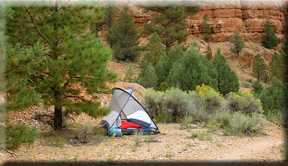
This deadly species is found in southern California, Arizona, New Mexico, Texas and Northern Mexico. When camping in these states, use caution. The vast majority of scorpions provide a harmless but painful bite. The treatment is the same as that for a wasp sting. Wash the area with soap and water; apply cold for about twenty minutes; and take oral antihistamines to reduce infection, pain, and swelling. Use an extractor pump to reduce the amount of injected venom. When camping in desert areas, use precautions to prevent bites.

Wasps, Bees, and Hornets
Wasps, bees, and hornets can inflict painful stings that are not only uncomfortable but may invoke a dangerous allergy response.
Last year I was bitten by a yellow jacket while handling rocks in my water garden. The bite brought acute pain but was brief in duration. I immediately applied ice for twenty minutes and the swelling was gone. But a couple of weeks later I was bitten again on the same hand. This time the ice treatment didn’t work and my hand really swelled up. My hand was so swollen and stiff that I couldn’t grip items with that hand for the next three or four days.
Severe allergic responses can possibly include anaphylaxis. This must be treated immediately. Its danger is loss of the patient’s airway due to swelling which can be fatal.
I carry am emergency allergy kit when travelling with companions that have severe allergies. It includes epinephrine 1:1000, a syringe, some Benadryl, and hydrocortisone. Label the emergency dosage on the epinephrine bottle. It is 0.2 cc injected just under the skin. This will quickly open a closed airway. Next, an oral antihistamine (Benadryl) is given. This will last for two to four hours. The anti-inflammatory steroid (hydrocortisone) is good for treating the allergic response for the next day or two. This bee sting kit is mostly a prescription item your doctor will write. He should not only give you the needed prescriptions, but will demonstrate how to properly use the syringe.
Severe allergic responses are extremely rare occurrences. Thank goodness the vast majority of stings are harmless if somewhat painful occurrences. These are easily treated by washing the bite area with soap and water, applying ice or cold water for twenty minutes, and taking an oral antihistamine (Benadryl). These procedures clean the area to prevent infection and reduce the pain and swelling. Also the suction pump can be used to reduce the dose of venom.
These insects try to avoid you, but they are drawn to the smells of beverages, food, lotions, perfumes, and to colorful clothing.
Some yellow jackets mark their victim with a scent so other yellow jackets will bite them too. I once experienced this phenomenon when a friend killed a yellow jacket by swatting it. He then went into a crowded area. He was hunted down by several other yellow jackets and bitten multiple times. These insects had to find him in a crowd, so be careful not to swat these insects because you may become marked for more bites from the rest of the clan.
Bees, wasps, and hornets have caused more deaths than snakes and bears. The potential severe allergic responses are not to be taken lightly. If someone has severe allergies to insect stings, be prepared with a bee sting kit and know how to immediately use it properly.
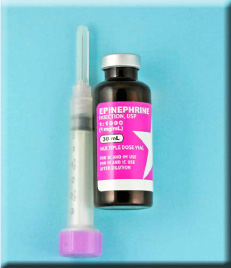
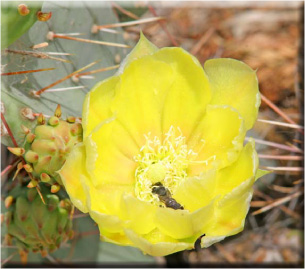
Poison Ivy, Poison Oak, and Sumac
All of these plants can cause misery. They all share the same oleoresin called urushiol. This exudes from the plant’s leaves, stems, and roots. It is what causes contact dermatitis.
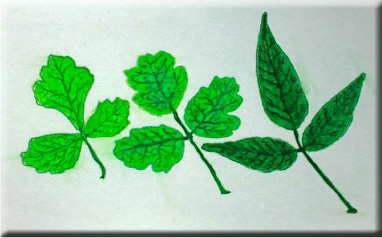
Urushiol is a sticky, clear oil that occurs in live and dead plants and even in the smoke from them being burnt. This oil causes an itchy, blistering rash if you touch the plant or an object or clothing that has come in contact with the plant.
Fifty to seventy percent of the population have an allergy to urushiol. That means upon repeated contact the allergy response is worsened. Some people are immune to these plants. Thank goodness I’m one of them. I’ve hiked and fished the Deschutes and Rogue river systems in Oregon without a problem while my companions suffered immensely. Native Americans must be immune to these plants because they even weave baskets from the vines of poison ivy, oak, and sumac, and don’t have problems.
Once an initial contact is made with this oil, it takes about ten to fifteen minutes to evoke a response; it first resembles a mosquito bite followed by a small itchy rash. Touching this rash causes a burning pain. This itchy area enlarges in size forming a large, reddened, raised, and blistered area. The rash spreads as the toxic oil moves to adjacent skin areas. Also if there is re-exposure to the oil from infected clothing, equipment, sleeping bags, shoes, socks, or shoe laces, the misery is spread.
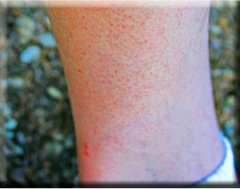
Once a plant has been touched, you should immediately try to remove the toxin. You have ten to fifteen minutes to do so. Rinse thoroughly with cold water. If the water is warm or hot it will open your pores and this will allow the toxin to penetrate the skin and will make things worse.
A solvent, if immediately available, is also effective. The ethyl alcohol in hand sanitizers, along with other products which contain alcohol derivatives, poured over the area first and then rinsed with copious amounts of cold water is effective at preventing the rash. Water oxidizes away the urushiol. Hydrogen peroxide or bleach added to the cold water enhances this oxidation. Fels-naptha soap and Oak n’ Ivy is also helpful.
It’s important to remove the exposed clothing and place all safely into a plastic bag. Take this contaminated clothing straight to the washing machine. Use plenty of laundry soap to prevent contaminating the machine.
Once oil has bonded with the skin, Aloe Vera can be helpful. Drying agents such as calamine lotion and hydrocortisone creams are effective. Avoid petroleum based lotions. Vaseline is a poor choice because it spreads the toxin.
The natural plant Jewelweed commonly grows in the same areas as the poison ivy or oak. This occurs in the Eastern part of the U.S. This plant has yellow or orange flowers and seed pods that resemble tiny cucumbers. Crush the leaves and rub gently on the infected area.

An oral antihistamine such as diphenhydramine (Benadryl) is helpful. If you are infected, take a cool or cold bath and completely cleanse with soap. Cool saltwater compresses are also good; symptoms take about a week to clear up. But the best defense is avoidance.
Remember the saying, “Leaves of three, let them be.” Poison oak is more difficult to identify than poison ivy. Poison ivy has smooth-edged leaves while poison oak has serrated or lobed leaves. Poison sumac has an entirely different leaf pattern. Sumac is found in marshy areas in the South or East. It’s not a big problem for hikers. But poison ivy and oak can grow just about anywhere where the elevation is below 5000 to 6000 feet. It’s in the creek bottoms and slopes where hiking trails are common. All have vine-like brushes with long thin branches. The ivy and oak have the distinctive three leaves together in a bunch. Sumac has more than three leaves and similarly grows on a vine. Since the dead plants, roots, and vines, along with the leaves contain the toxic oil, all forms of the plant must be avoided.
There are basically five types of poison ivy, oak and sumac:
- Eastern poison ivy is found in New England, Mid-Atlantic, and the Western Rocky Mountain states. It prefers temperate forest slopes and creek bottoms.
- Ryberg’s poison ivy is found in the Rocky Mountain states below 6000 feet elevation. It’s a small shrub, usually less than three feet high. It likes moist, sunny areas along creeks and canyon slopes.
- Eastern poison oak is found in the Mid-west and Southeastern states. It prefers sandy soils and old fire regions.
- Western poison oak is found in California, Oregon, and Washington. It is a lower elevation plant (less than 500 feet) and lives along shadowed slopes and creek banks.
- Poison sumac prefers marshy areas east of the Mississippi River. It has toothless leaves and drooping clusters of white berries.
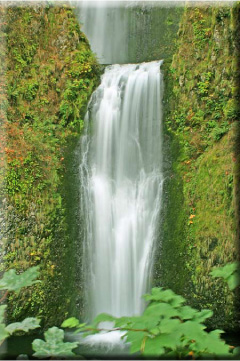
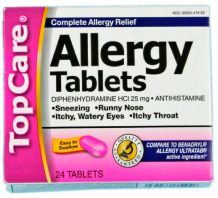
All five of these plants produce the same toxin: urushiol. Learn to recognize and avoid them. There is a problem trying to recognize vines without leaves. These leafless stems grow in small scattered communities. A key is that they are thornless and they stand about one or two feet tall. The stems have a characteristic curve and their ends are capped with a pointed bud.
Be sure to circumvent these plants if you must pass through them. Push them away with a disposable stick. Don’t even contact them with your shoes because when you take your shoes off you may be exposed to their oils.
A problem can occur if you are hiking in the dark. During daylight hours look for the leaves in groups of three. In the spring they may have a reddish green color and during the summer they are vibrant, oily green. In the fall they may be yellow or bright red. Don’t confuse these plants with raspberry, blackberry and salmon berry; all of these have thorns.
It’s difficult to differentiate between a squaw brush and a poison ivy or oak. The poison ivy and oak have a stem that connects the middle leaf. The harmless squaw brush is stemless; that is, the leaf attaches directly to the junction of the other leaves.
A hiking rash due to skin friction may be confused with the onset of poison ivy, oak and sumac. The location of the rash is a key in determining its cause. If it is at a friction point, it’s likely due to hiking friction which can be corrected by lubrication with Vaseline. But if you put Vaseline on an area irritated by poison ivy, oak, or sumac, the irritation will spread.
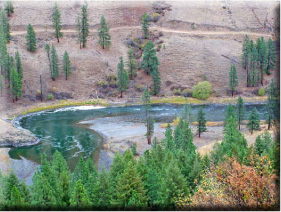

Camping Adventures • Dutch Oven Cooking • Sports Knots
Fly Tying • Freshwater Fishing • Fly Fishing

